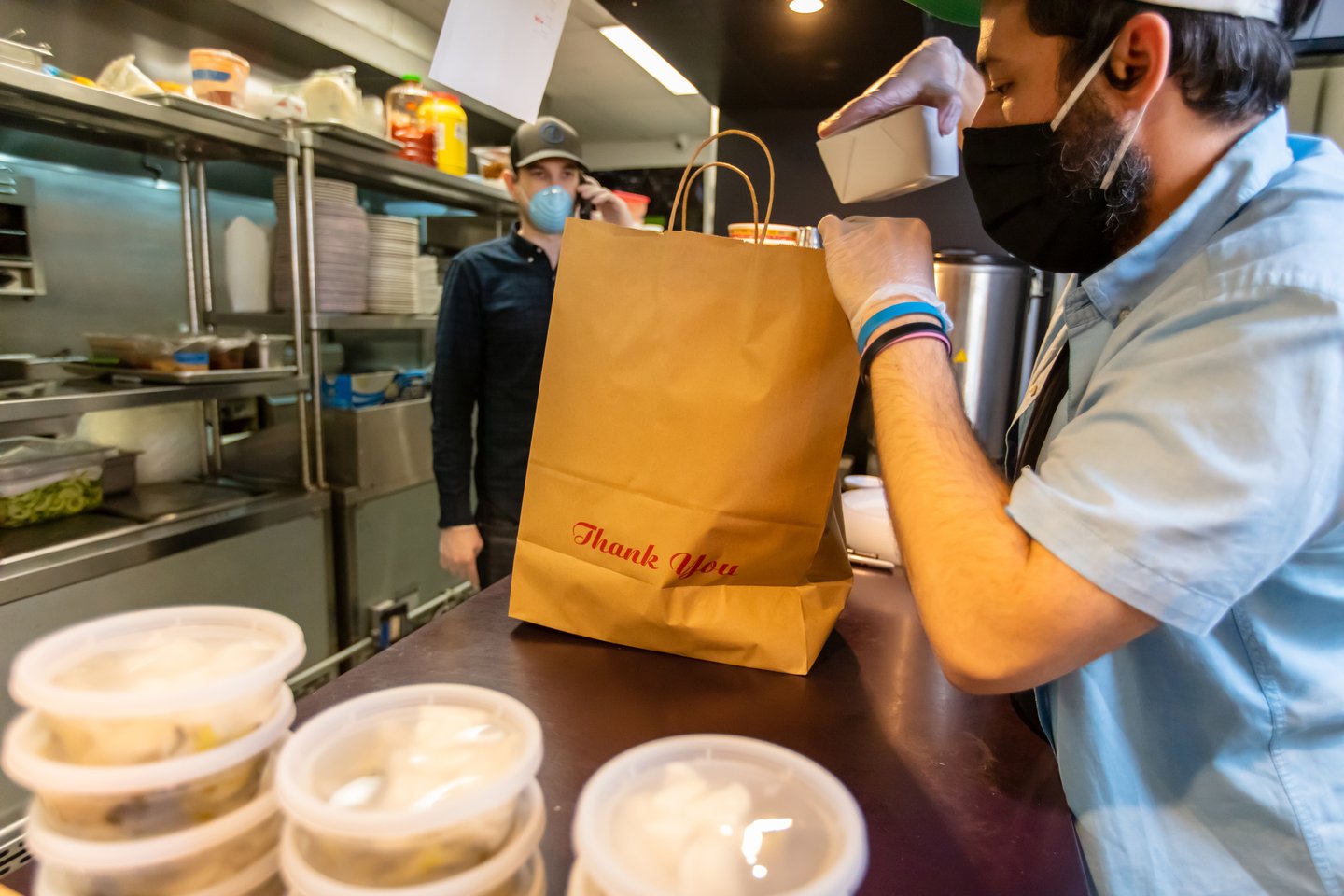The Benefits of Ghost Kitchens & How to Implement One
You probably didn’t know that many of the restaurants you order from online are actually invisible. What does that even mean? Don’t worry, Casper isn’t coming for your kitchen.
With the pandemic still spreading around the world, restaurants are turning to modern concepts to continue coping with limitations imposed on in-venue dining. Some F&B hospitality operators are using ghost kitchen and virtual food hall ideas to generate demand from new sources. Ghost kitchens and virtual dining halls are restaurants that are run out of an existing commercial kitchen. Typically, ghost kitchens have one menu option for guests to choose from, while virtual food halls have multiple menus.
Both dining options are simple to implement, considering that they don’t require traditional in-dining setups. Operators simply have to create their menu, secure a kitchen and the rest is as easy as marketing.
So what is the benefit of ghost kitchens? Operators are starting these new virtual brands for a number of reasons:
- To reuse their current inventory and space
- In the hopes that one of the new concepts will take off
- To better serve their local neighborhoods
- To create new jobs in their communities
- To give the opportunity for up and coming chefs to originate
This newer restaurant model sweeping the country is much easier to conceptualize and project manage than one might think.
According to John Myers, one of the founders of XO Burgers, a burgers and wings ghost kitchen concept brought to you Big Tree Hospitality, there were a few reasons they turned to ghost kitchens during the pandemic:
“We wanted to come up with a menu that would utilize our brand, space, staff, and ingredients, so we came up with a burger and chicken wing concept that made sense for us and the communities we’re in,” said Myers.
So how do ghost kitchens work and how can you implement one today?
- Lock in your kitchen location: If you have multiple venue options, select the one that will have the capacity to run a second business out of, especially post-pandemic when the kitchen is at full capacity.
- Create a brand: Just like your current restaurant endeavors, your ghost kitchen needs to have its own brand. Have fun coming up with a catchy name, imagery and menu offerings. For the menu, keep it simple and try reusing ingredients from other items to keep costs down.
- Secure your digital footprint: Partner with a first-party order and pay solution, like Bbot, that will set up your digital menus and support your staff. Securing the proper tech is key to running a successful ghost kitchen. Also, consider adding a third-party delivery marketplace to help promote the brand.
- Hire staff: Hire the right people to manage, make, package, and expedite orders received. Go Live!
“I wouldn’t have been able to make this ghost kitchen a reality without having a great support team, which made all the difference in our decision due to some of the operational changes we implemented,” said Chris Viola, who started testing the menus of his three restaurants —now all under the Cul+ure Collective brand— to better understand what foods were more suited for delivery and pickup.
Ghost kitchens are not only a means to survival for a lot of restaurant operators throughout this continued shut down period, but they’re also the way of the future. Beyond the pandemic, consumers will expect the ease of ordering and having options. The hospitality industry will need to oblige, and this is a great way for some operators to meet this need.
Neighborhoods are thriving with first party platforms due in part to the support of their local community. The two most important points that data shows is that guests want to 1) have the hospitality continued at home, and 2) order as many different options as are available. Families are finding it easier to accommodate their picky children with a few clicks of a button. At-home game nights have been upgraded to include Becky’s veggie options, her husband’s gluten allergy, and Jay’s incessant need to always have ramen.
“Vegas Test Kitchen is designed like a food hall. We offer dine-in, curbside pickup, takeout, and delivery. We allow our chefs to do what they love - network and build a following. I wanted to maximize the kitchen space and empower my fellow chefs during these tough times,” said Jolene Mannina, the founder of VTK, and President of Secret Burger, an online marketplace which offers off-the-menu dishes for consumers to pre-purchase before they’re sold out. The average VTK customer spends approximately $35 and usually orders three items instead of one.
Virtual brands are popping up everywhere, and they’re here to stay. In fact, you’d be surprised how many of the brands you love and order from are actually owned by the same people who also own the popular restaurants you already dine at in your city. We hope to see the industry continue to innovate to use technology to support their business and hospitality goals.
About the Author
Lee is Bbot’s first employee and has helped build out departments like customer support and success, implementations and onboarding, marketing, and PR. Prior to Bbot, Lee worked in financial services, selling forex and emerging markets research to banks and hedge funds.

